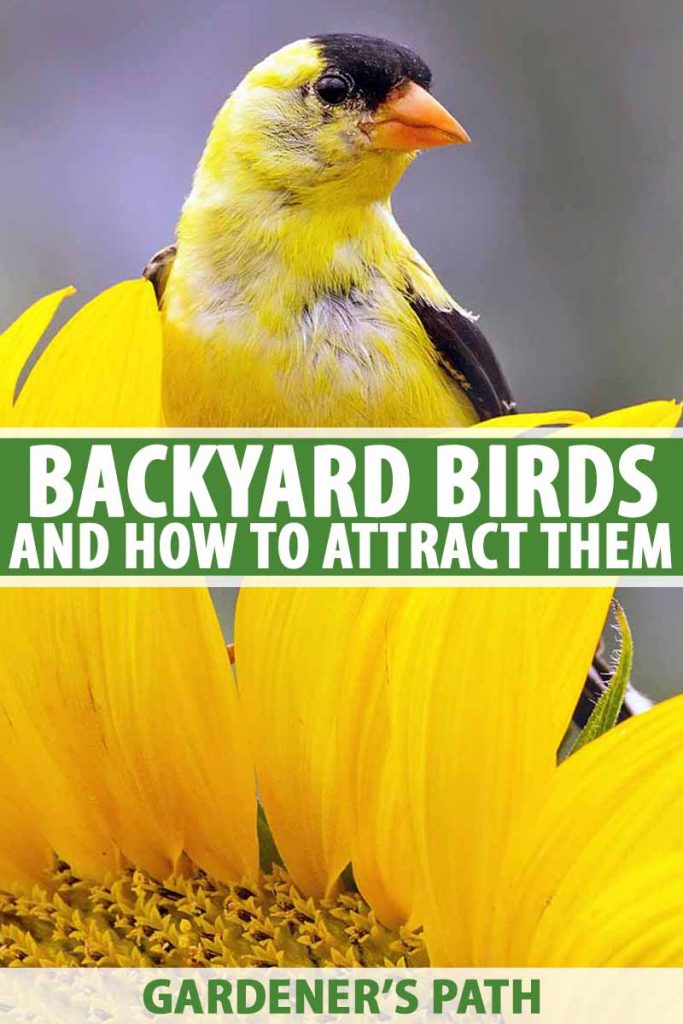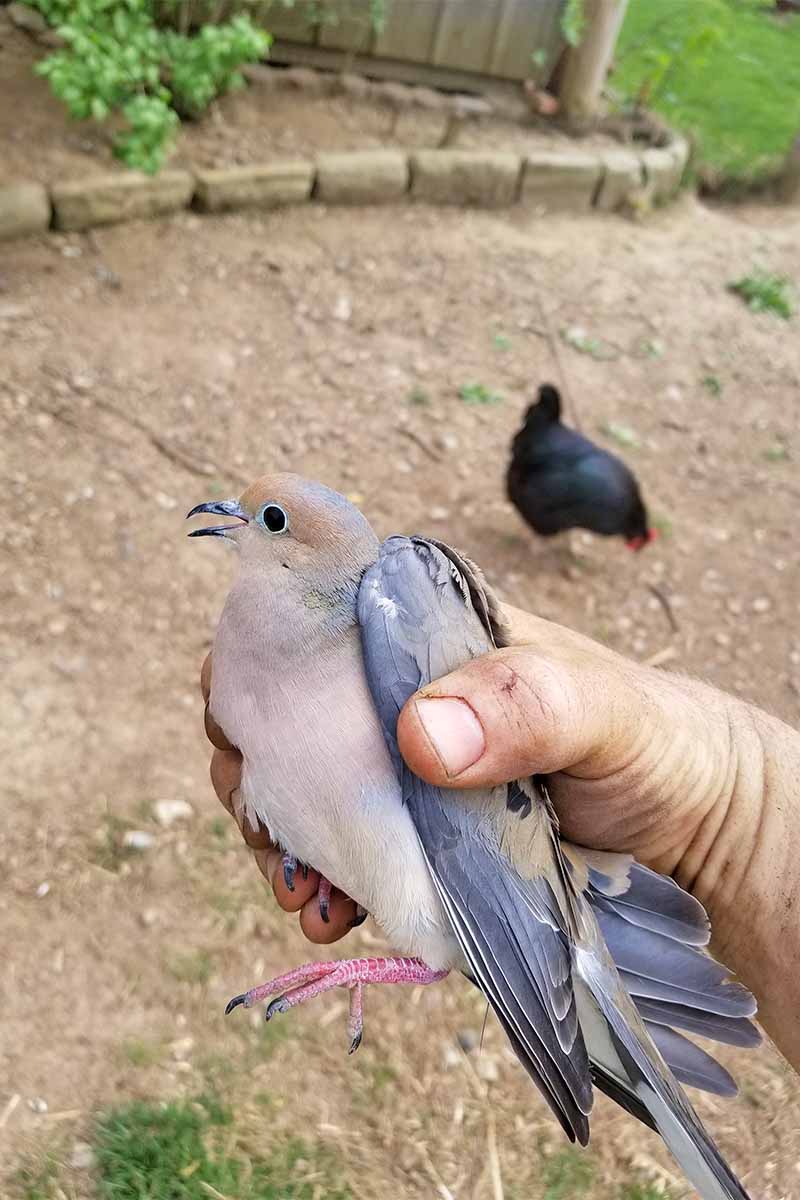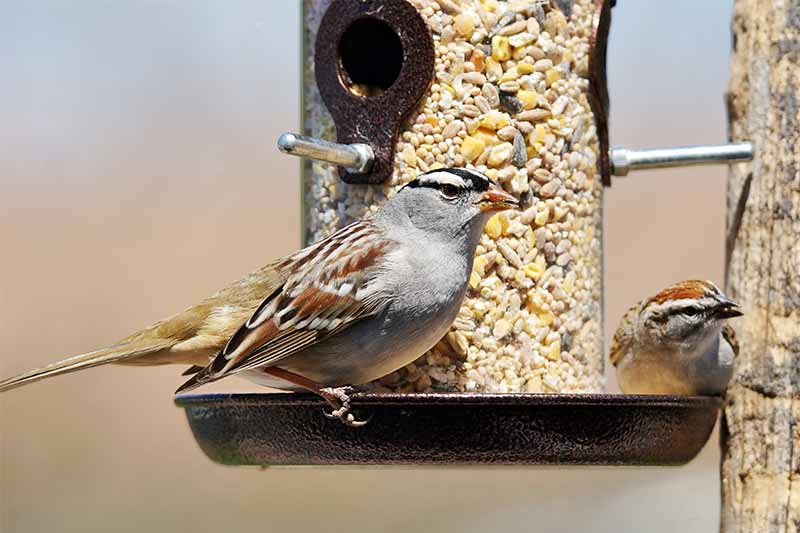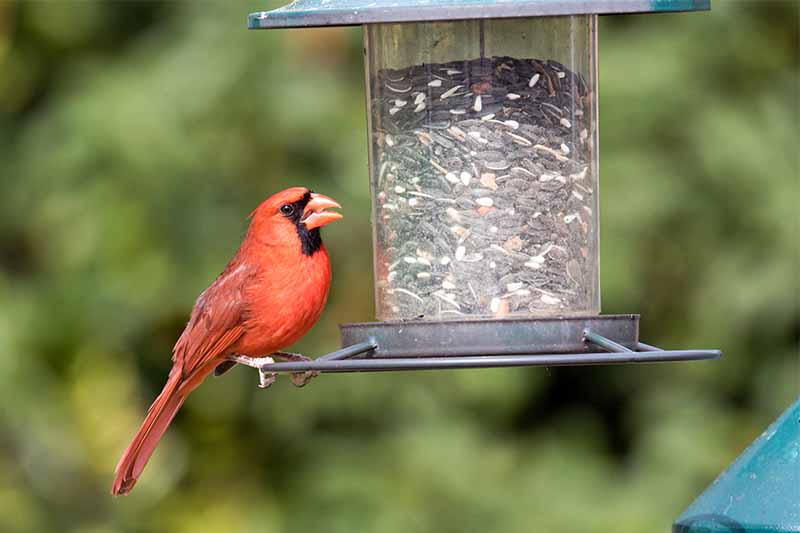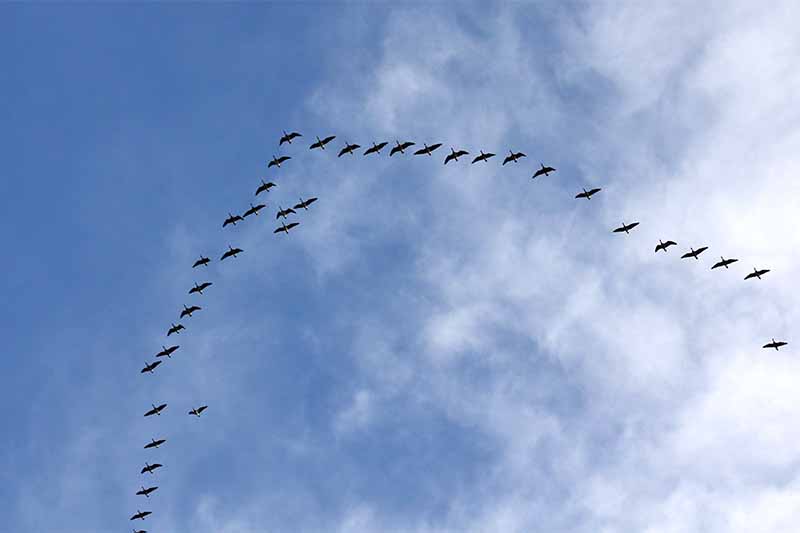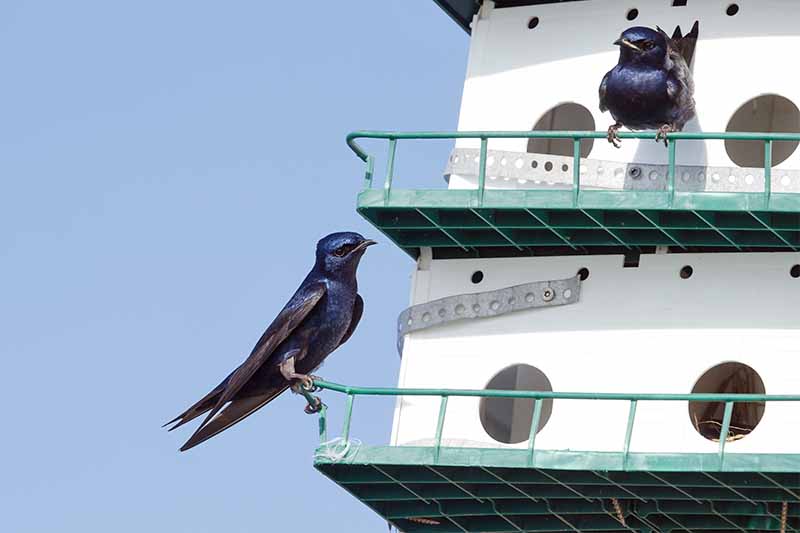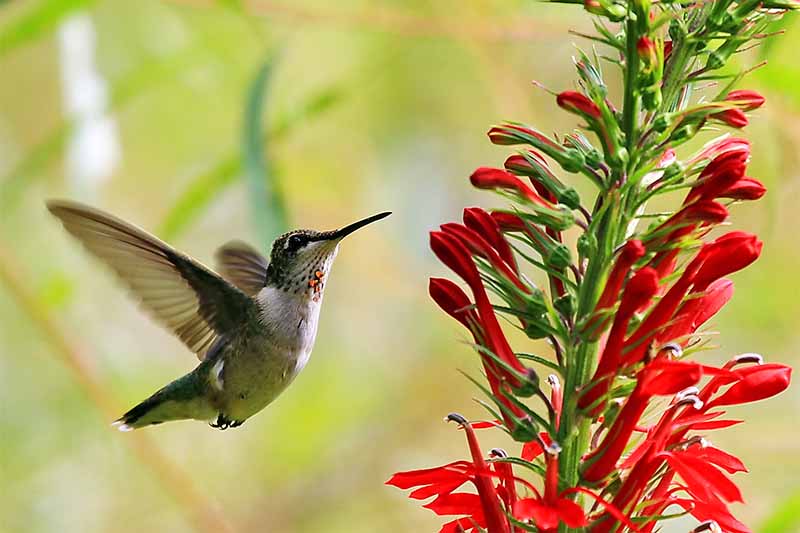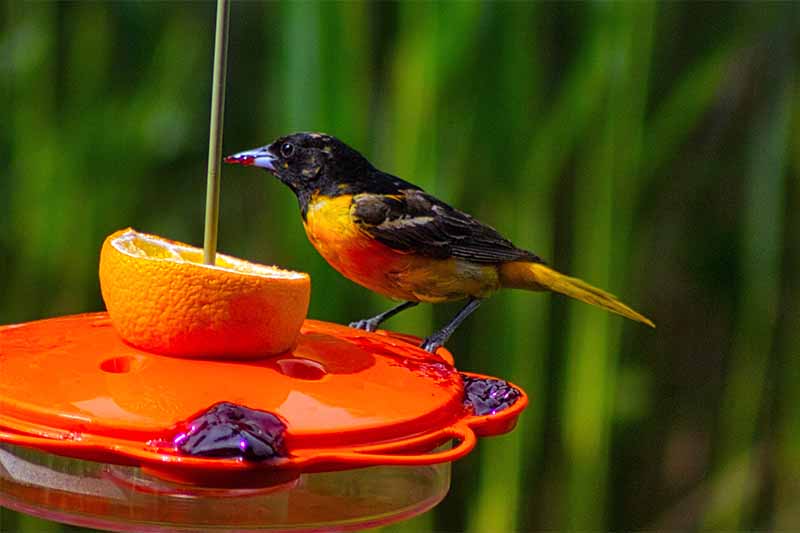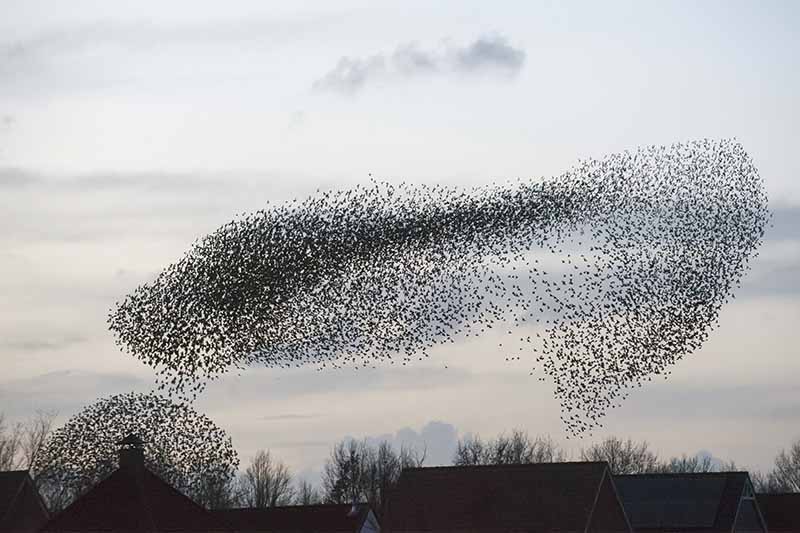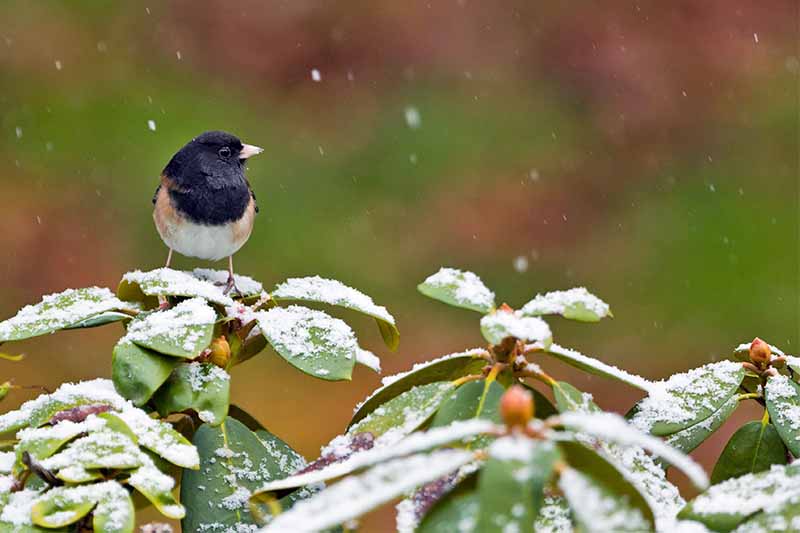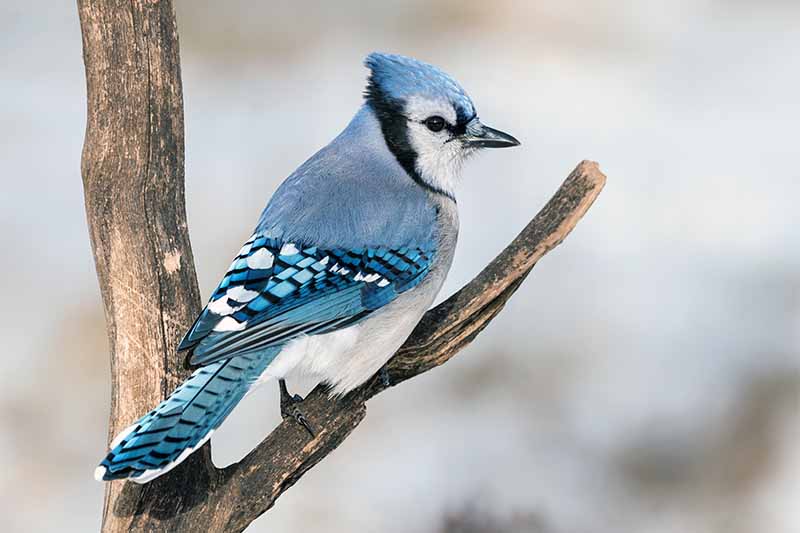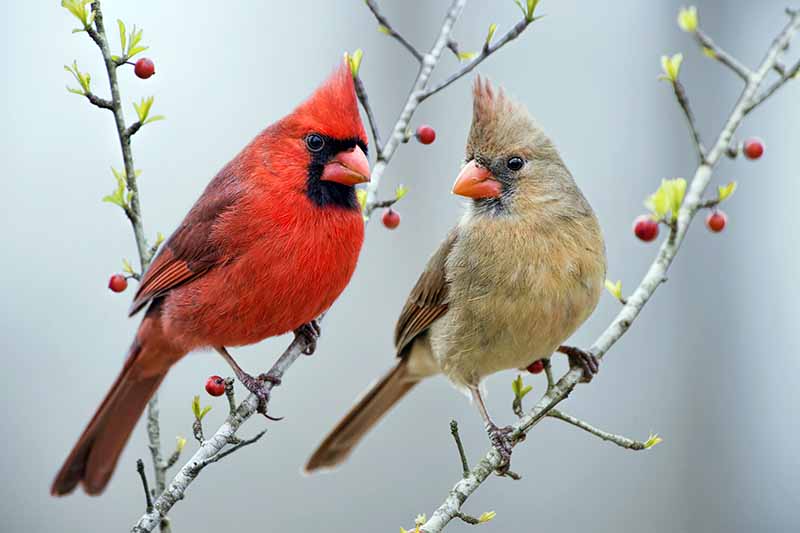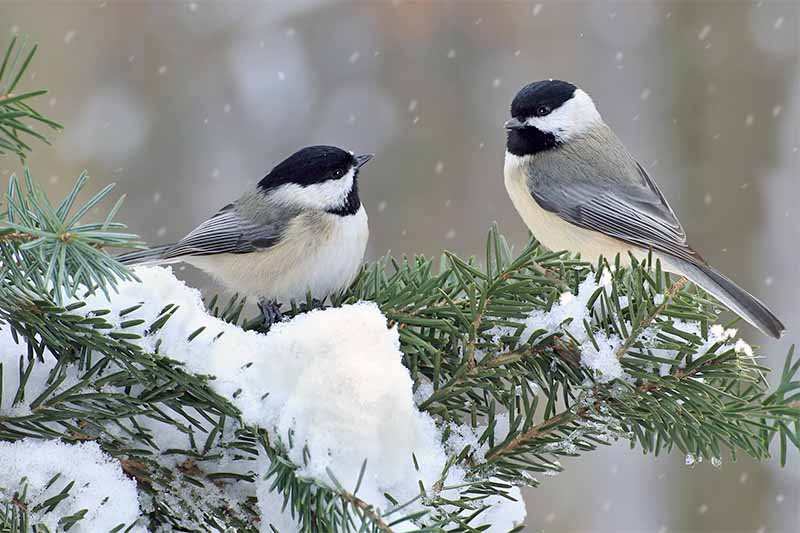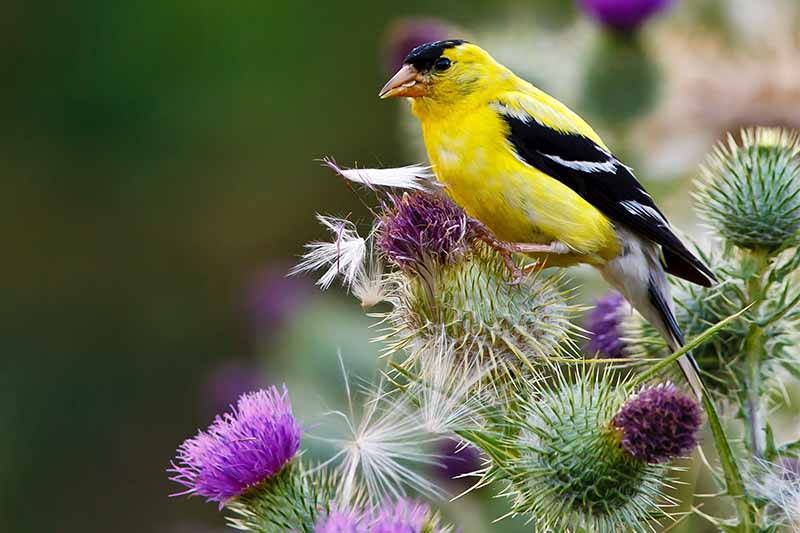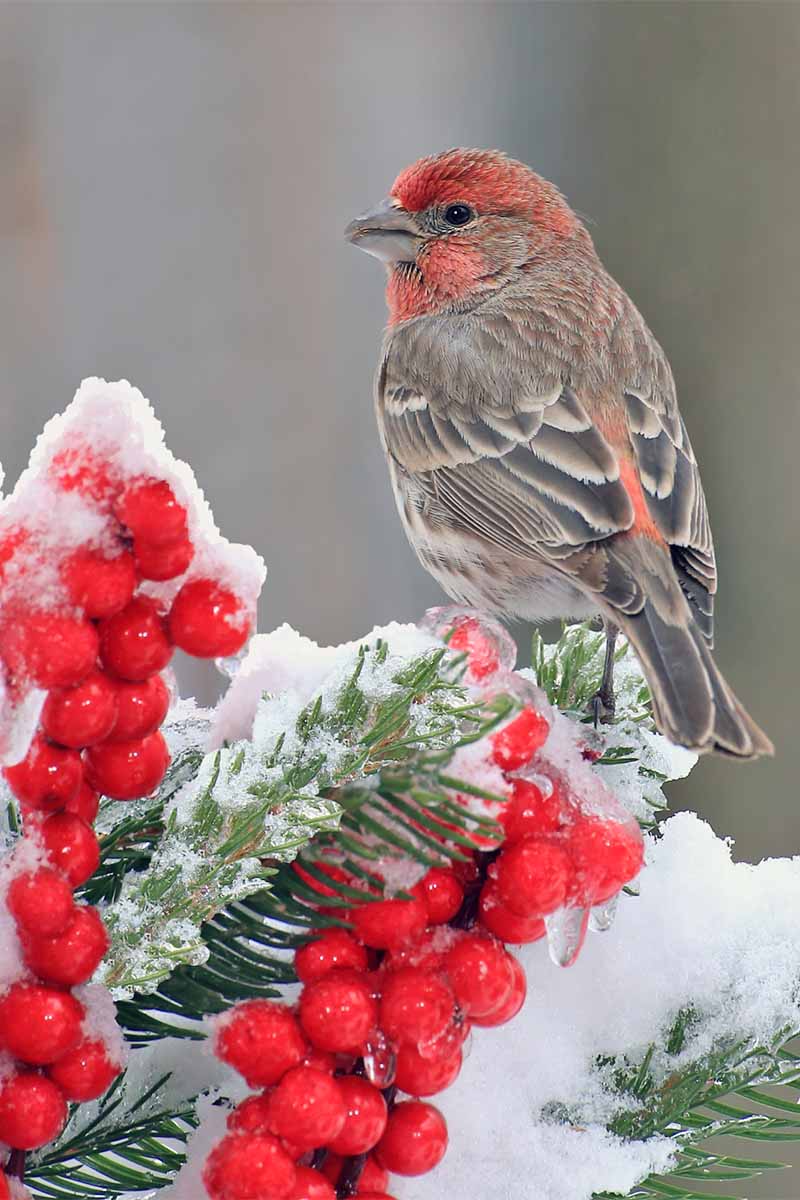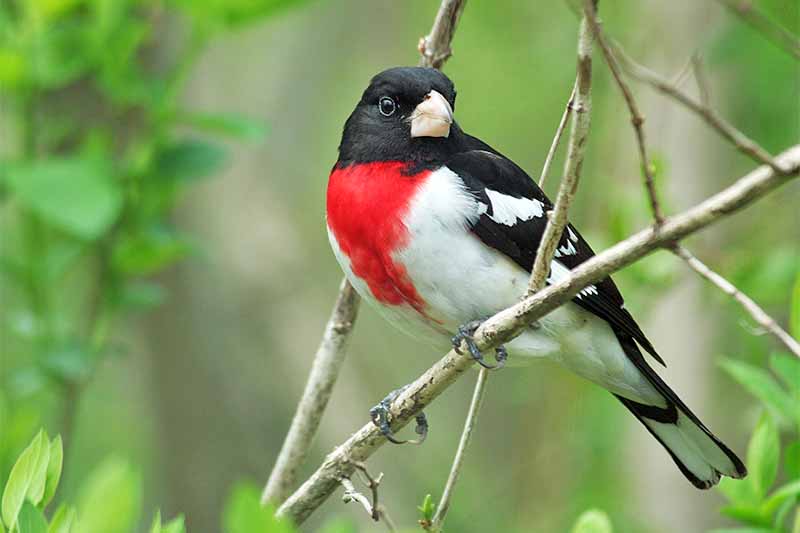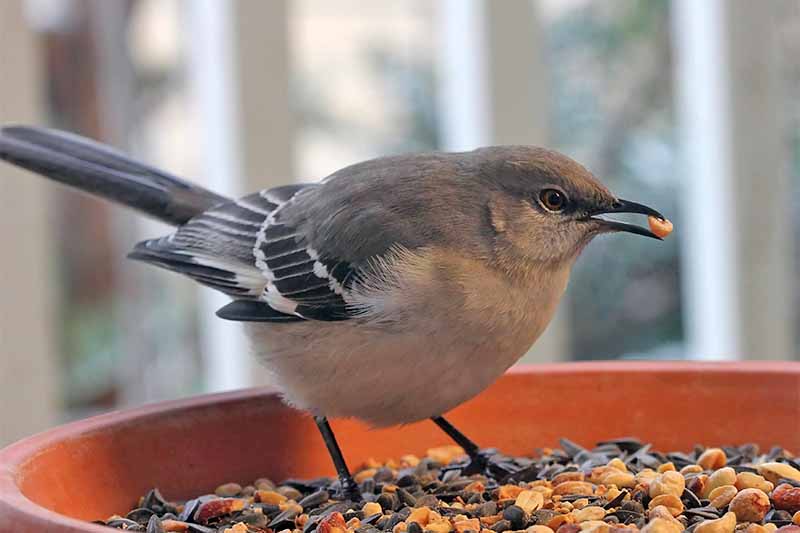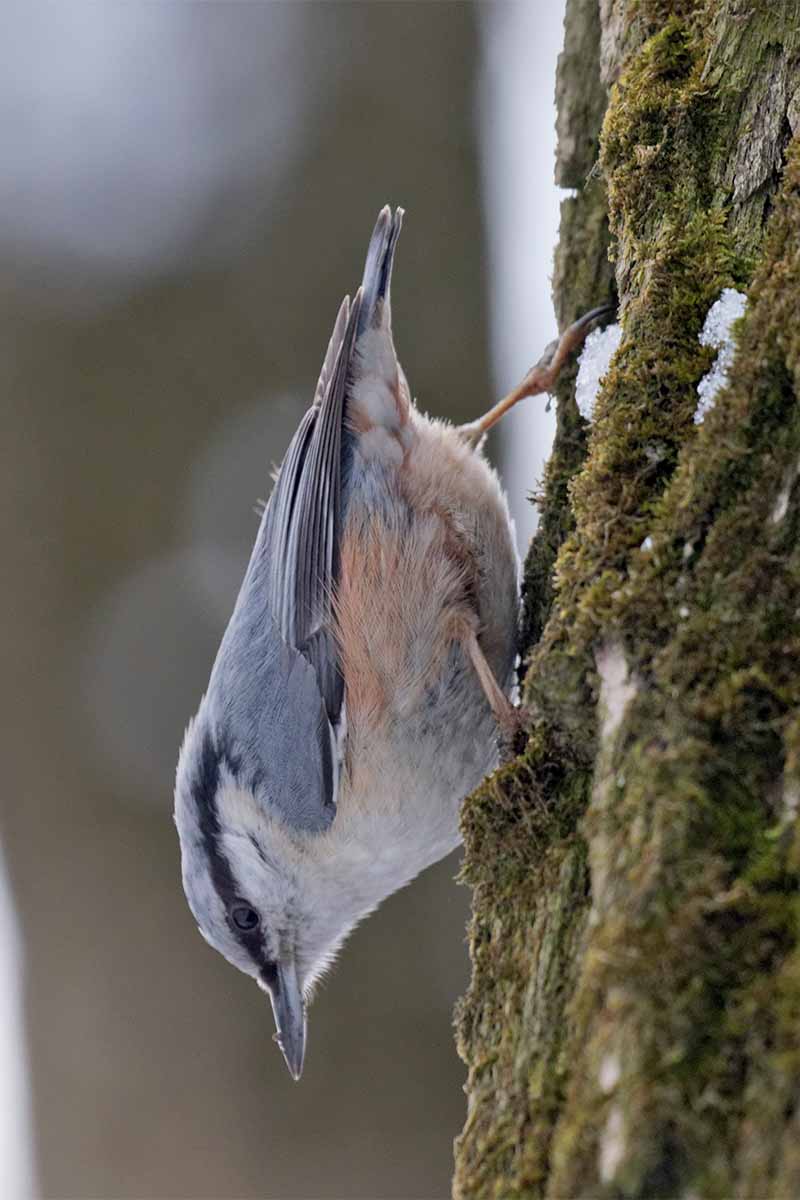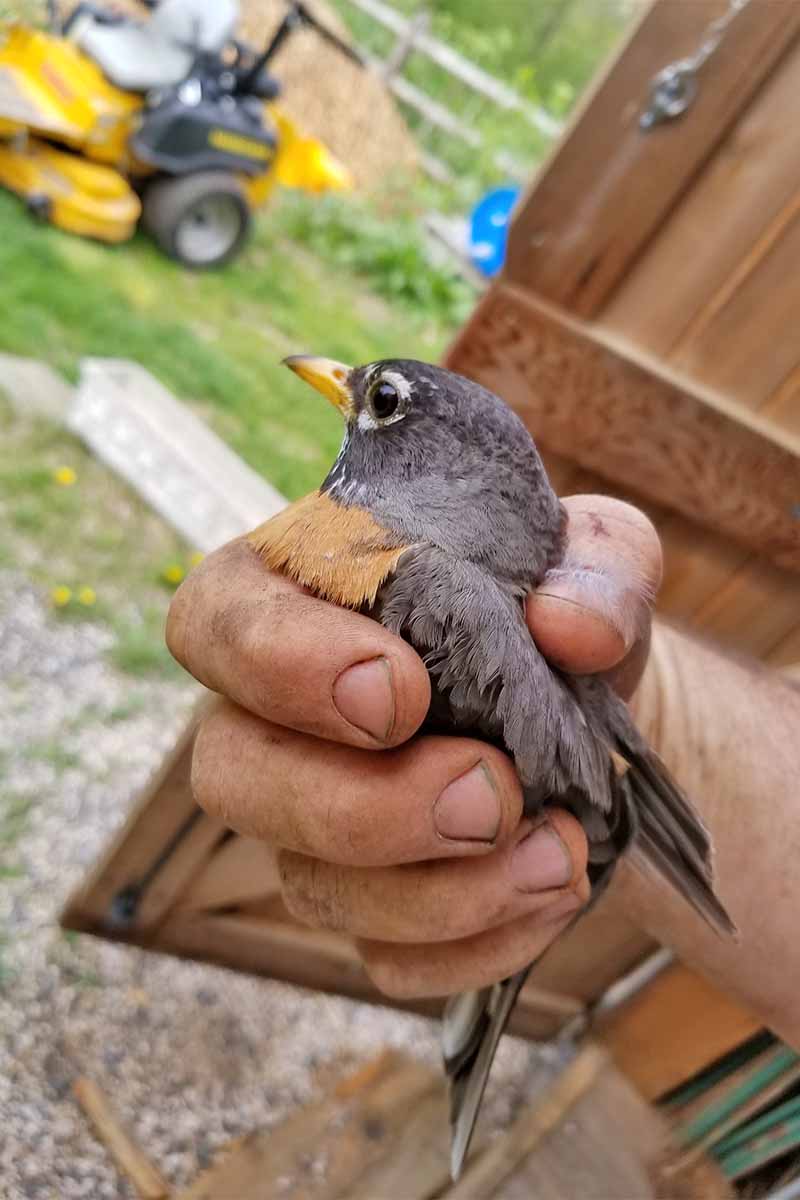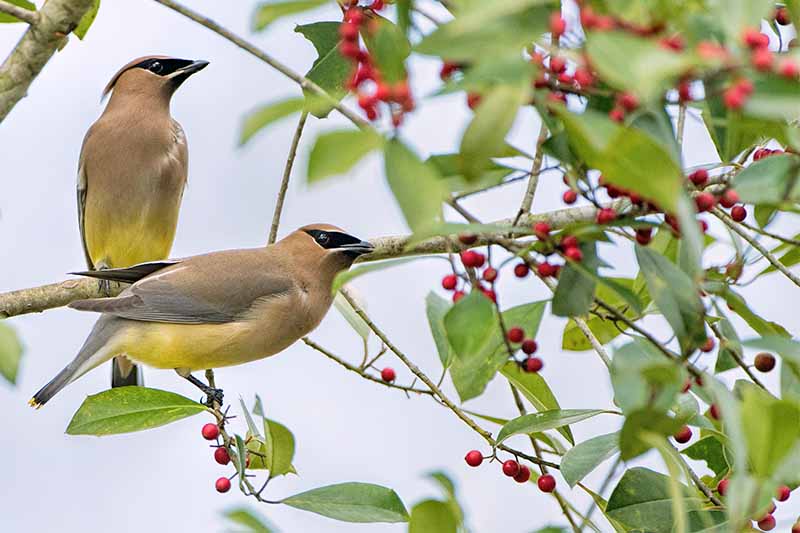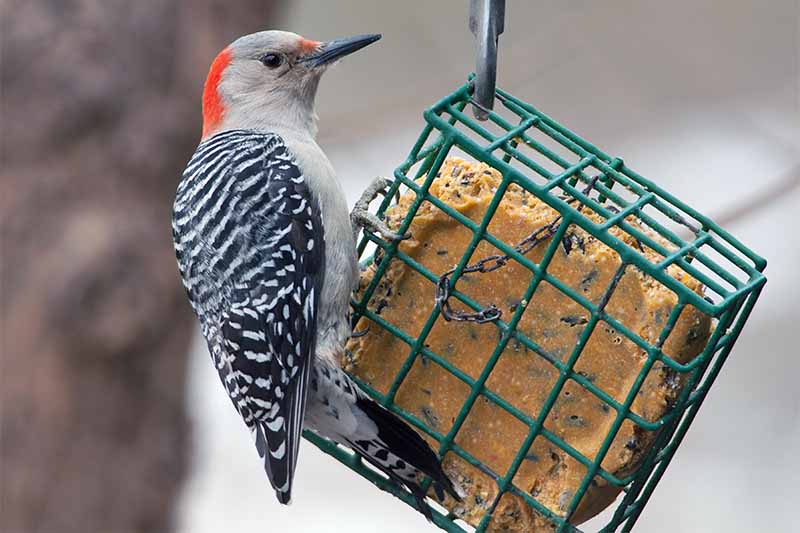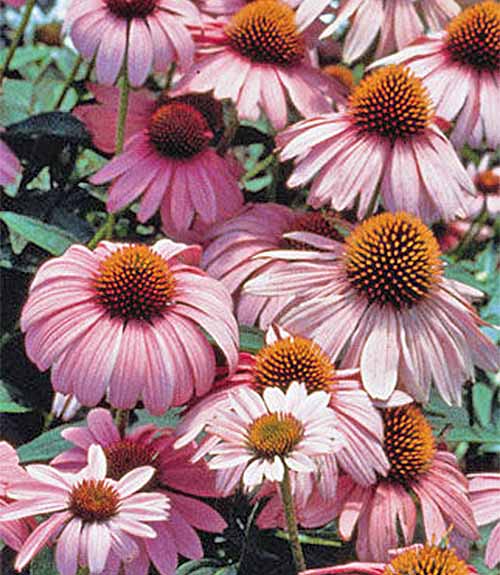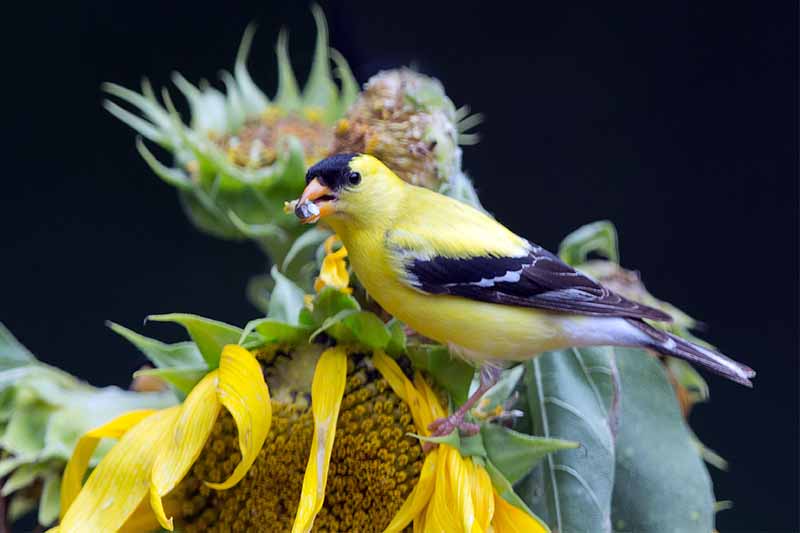I know I’m not alone in selecting plants and gardening practices that encourage the presence of wildlife, most especially a motley crew of feathered friends. Not only are these animals a welcome audial addition to my garden, they also bring unexpected flecks and flutters of color that add real variety to stands of flowers and grasses. We link to vendors to help you find relevant products. If you buy from one of our links, we may earn a commission. Here’s what’s to come: We’ll take a look at the species you’re likely to see visiting your garden throughout the year and touch lightly on how to attract them to your garden. Let’s dive in and check out more on backyard birds!
Location, Location, Location
Before we begin to consider what backyard birds you’re likely to spot, it’s a good idea to consider where you are geographically. Folks in the northeast are going to have an entirely different set of visitors than those in the American southwest, and once you start adding mountain ranges and bodies of water to the equation, you’ve got even more variety to consider. A nice resource to have on hand is an identification field guide. While much of that information may be available online, it’s a world easier (and faster) to identify a bird by flipping through a few pages of a book rather than searching for it online. Maybe I’m old fashioned about it, but I’m more comfortable with a book than a device. Having said that, it’s great to take your notes from the field back with you at the end of the day, to look up even more detailed information online, via a more in-depth resource.
Seed Varieties
You should expect to find a variety of seed mixes available. But they’re not one size fits all. The Kaufman Field Guide to Birds of North America is a great all-purpose identification guide, and it’s vinyl-bound for extra durability. Written by Kenn Kaufman, this is a generalized book that covers all of North America, so it contains tons of information. As far as region-specific guides go, my best suggestion is to find a locally-written guide at a local bookstore. These are usually written by devoted birders who have first-hand experience with birds all over your region. National Audubon Society Field Guide to North American Birds: Eastern Region Outside of that, though, I’ve had great luck with the National Audubon Society guides in every category. National Audubon Society Field Guide to North American Birds, Western Region
Eastern Region Western Region
For something ultra specific, the Peterson Field Guide to Feeder Birds of Eastern North America is about as good as it gets when you’re identifying feeder birds from your kitchen window, or a seat in the garden. Peterson Field Guide to Feeder Birds of Eastern North America
When I first got into feeding birds I expected all species to eat anything they could get their beaks into. Turns out, birds are as picky as a five-year-old at a nice restaurant. Here’s a quick breakdown on the types of seed you’ll find in a mix, and a few other options:
Sunflower: You’ll find three varieties of sunflower seeds. The black oil seeds have a thin shell and can be munched on by just about anything, whereas striped sunflower seeds have a much tougher shell and have a more limited list of species that will eat them. Hulled sunflower seeds are pre-shelled. This means way less mess, but they’re also far more expensive.
Thistle/Nyjer: Tiny seeds favored by goldfinches, thistle seeds can be very invasive. The solution is to heat up the seeds before distribution to limit their chances of taking root. Nyjer seeds are produced from a different plant (Guizotia abyssinica) that is less invasive than thistle, but these two can be used interchangeably.
Millet: While birds love white millet, they tend to ignore the other varieties like red and golden. The latter is often used as a filler in seed mixes, so always opt for white millet when choosing what works for you.
Safflower: Similar to the striped sunflower seed, safflower has a tough-to-break outer shell. It’s primarily used to attract cardinals, but a handful of other species will dine on it too.
Milo: A seed favored by ground feeders, milo can also attract undesirables like cowbirds. Avoid using it when you can!
Corn and Peanuts: These are included in the same bullet because they carry identical concerns and uses. Only use peanuts and corn that have been sold specifically as food for birds, and use them sparingly. These two options can rot quickly and contaminate surrounding seed and feeders, and worse yet, they attract wildlife like deer, raccoons, bears, and others. Use it, but in moderation!
Suet: Icky to the touch, suet is congealed animal fat. It’s often mixed with seeds, fruits, and other additives to make a high-energy food source for a variety of species.
Nectar: Mostly reserved for hummingbirds, nectar is essentially sugar water. Purchase it from the store, or make your own by boiling 1/4 cup refined white sugar with 1 cup of water until dissolved; allow to cool and then add to the feeder.
A water source is appreciated as well. A full belly isn’t helpful without a drop to drink! A heated bird bath is a boon to winter birds!
Migratory Birds, Year-Long Residents, and Stages of Growth
Many backyard birds are short-term visitors to your area based on their migratory path, while others stick around all year round. Others will simply follow the food sources available to them, regardless of temperature. A perfect example is the Canadian goose. These birds will travel in their iconic V-shaped flocks to find warmer locales during the winter months before turning around and heading home the following spring. As an aside, I’ve got a soft spot for these geese. In fact, I’ve been known to pull over on the side of the road, stand on the hood of my car, and watch a flock of geese through a pair of binoculars until they’re beyond the horizon.
People probably think I’m crazy and, let’s be honest, they’re probably right… Backyard birds can look different depending on whether their current stage of development, and whether they’ve recently molted. For example, the red-tailed hawk will have a white belly that darkens as it matures, and European starlings change their look based on the season. This can add some variety to identifying familiar species, based on when you’re spotting them.
Familiar Feathers to Look For
Purple martins and various swallow species that earn their keep consuming and controlling our insect population are among the earliest to depart. They also have the longest journey to their ancestral homes in the tropics. This is where the insects and plants are plentiful.
So, before the danger of frost and snow that can destroy their northern food sources occurs, they are on their way to Central and South America without even a single “adios.” Hummingbirds, who have earned a special place in the hearts of backyard birdwatchers, will often linger at our feeders into late September and even deep into October. Some of the hummers we see late in the season are transients that have begun their journey south from Canada.
On their way south, they make R & R stops along the way for replenishment and an energy boost. It is important that hummingbird feeders be kept up and maintained even into November, to help out the stragglers. Orioles usually precede the hummers, so keep putting out oranges and nectar for them as well.
You may notice in that in early autumn, great flocks of starlings, blackbirds, and grackles begin swarming in the sky, like great undulating schools of fish in swooping and exotic flight patterns. This is the time for final assembly of those species, on their way back to warmer climes. One day you will look up and notice that they are all gone.
Weather patterns have brought some changes, with the movement of species during the seasonal transitions. If you are fortunate enough to have attracted eastern bluebirds to your backyard nesting boxes, you may have noticed that many are staying year round.
They use nesting boxes or tree cavities for winter shelter, and you may find an entire extended family of bluebirds with you all winter. They will survive if there are wild berries close by. You can help them with servings of suet balls made especially for bluebirds, and the meat of sunflower seed (hearts). They can’t eat whole sunflower seeds because the shells are difficult for them to crack with their special type of beak. Those that stay will be the first to begin nesting come springtime. With such an early start, they can nest up to three times during the season. Other neat summer visitors such as flickers tend to migrate, as do red-headed woodpeckers. The downy and hairy woodpeckers stay with us. On the plus side, northern birdwatchers can look forward to a few new winter arrivals when the juncoes, the birds we lovingly call “snowbirds,” begin appearing. They are larger than chickadees, and usually dark gray. Their bottom halves looks like they have been dipped in buckets of white paint.
Juncoes appear suddenly, often just before the first snow, after spending the summer in the arctic regions. And they visit our northern tier of states in the winter to enjoy the relative warmth and spend the season. It’s all relative, and in the end when you may be most in need of a hobby or a distraction to get yourself through the long, gray days of winter, you will have plenty of visitors to your backyard feeders. Who can you expect to see around your winter feeder and backyard? The following are the most common feeder species, but you can always expect a few unusual visitors along the way.
Common Feeder Species in North American Backyards
Blue Jay
Blue jays are the beautiful bullies of the backyard, loud and obnoxious mimics that will imitate the call of a predatory species to scare competitors from the feeder. They’re also capable of being quiet and of singing charming, subdued songs when nesting, so it’s hard to be too frustrated with blue jays.
They’ll eat about anything you provide, so there’s no need to be careful with what you’re using to attract blue jays!
Cardinal
Cardinals are, perhaps surprisingly, the jerks of the feeder and aren’t afraid to squabble for more than their share. The males wear an iconic red coat that’s impossible to miss, and have a call that sounds closer to a laser beam than a chirp. Females are more plainly colored and can be very territorial; I’ve seen them fight their reflections in rearview mirrors!
To see more of these in your backyard, attract them with safflower seeds, black oil sunflower seeds, and white milo.
Chickadee
Chickadees (black-capped and Carolina varieties) are small, adorable, and among the most friendly of birds you’ll see. With patience and the right food, they may even eat out of your hand.
Listen for that telltale “chicka-dee-dee-dee” call, or their beautiful rise-and-fall whistle. Attract them with sunflower seeds (whole or hulled both work), shelled peanuts, and suet.
Finch
Goldfinches are about as striking as birds come, and often fly in large flocks. They’re also easily startled and make it difficult to get up close.
While goldfinches will eat thistle seed from a feeder they’re at their best and happiest when they’re able to eat up the seeds from living plants in your garden. Plant echinacea, sunflowers, rudbeckia, and other wildflowers to attract goldfinches in swarms – or rather, in “charms,” “rushes,” “treasuries,” “veins,” or even “007s,” as flocks of goldfinches are sometimes called. (Don’t you love it?!). The house finch can be a noisy and annoying little bird, but that’s alright by me. They will eat just about anything in your garden, including desirable fruits and vegetables as well as obnoxious invasive plants like knotweed, thistle, and mustard.
If you want to minimize the damage they may cause, offer house finches seeds like nyjer seed, black oil sunflower seeds, and hulled sunflower seeds. Purple finches are subtly striking. This is the kind of bird that looks like it’s been dunked in grape juice, and is partially stained as a result of that immersion. They’re looking to gobble up sunflower seeds, thistle, and millet from the feeder, but are happy to dine on the seeds from large trees in your yard as well.
Grosbeak
The rose breasted grosbeak looks like it could be the national bird of Yemen with its black, white, and red coloration. They have an appealing singing voice, among my favorites, but tend to live near woodlands and forest rows.
The rose-breasted grosbeak builds a notoriously flimsy nest, so if you spot them nesting, give them plenty of space so as not to break it! They’re attracted to sunflower seeds, safflower seeds, and peanuts.
Mockingbird
Mockingbirds are spectacular vocalists and almost always a treat to hear; the only exception is when you’ve got a headache! I’ve had minimal luck attracting them to a feeder, and find they prefer to be left to their own devices.
However, supplies of suet, fruit, and shelled sunflower can help you to attract this accomplished vocalist to your feeder.
Mourning Dove
Doves are lovely little hunks of living marble with a low and mournful call… they’re also bottomless feeders and will munch on everything that falls to the ground from your feeders. I found a pair of mourning doves stuck inside of a chicken coop. They flew away repeatedly into the netting and were likely to be stuck forever if I didn’t catch them, so after some repeated attempts, they were finally exhausted enough for me to scoop up and release! It’s difficult to find something doves won’t eat, but at least they’re better backyard buddies than squirrels!
Nuthatch
The nuthatch is, in a word, fun to watch. It grips the bark of trees and hops up and down as if it’s on flat ground, seemingly immune to gravity.
These little fellas prefer wooded areas. They like to eat nuts, sunflower seeds, mealworms, and suet, but have been known to expand their diet beyond these foods.
Robin
Don’t forget about the popular and iconic American robin. These harbingers of spring have a much different palette than other feeder birds and require a different approach. Offer them cut up apples, mealworms, and berries. Because robins prefer finding their own food, you’ll have better luck tossing these things into your lawn than into a feeder if you want to attract them.
Titmouse
The titmouse is a funky little bird, an adorable fella with a funny-looking mohawk atop its head.
I’ve seen more of these in woodland areas than suburbs, but with the right food nearby, you’re likely to encourage a few to visit your backyard. Attract these solitary birds with sunflower seeds, suet, and peanuts. And keep in mind that they aren’t afraid to open their diet to other seeds as well.
Waxwing
Waxwings are real beauties, but they are also prone to flying into windows and dying on impact. For that reason alone, I prefer not to attempt attracting them towards my home. They’re also difficult to attract in the first place, and can have a bottomless appetite!
If you’ve got a feeder near a woodline and away from the danger of a deadly impact, you can encourage them to visit with chopped fruit and raisins.
Woodpecker
The woodpeckers (downy, red-headed, red-breasted, pileated, and northern flicker) are perennial feeder favorites, so long as you live in a wooded area. They have a call closer to maniacal jabbering rather than lovely singing, but they are handsome as can be.
Attract them primarily with suet for all the woodpeckers you can handle!
Backyard Birds of Prey
Many folks are immediately up in arms when they spot a bird of prey in their backyard, feasting on the songbirds and other feeder friends. You put in a lot of work to attract those finches, and now a hawk is dining on them! I’m definitely in the minority here, but I love seeing birds of prey in the backyard. Watching a hawk dive-bomb an unsuspecting bird is a true spectacle to watch, and it’s all part of the outdoor experience. I take no joy in seeing my favorite birds devoured by a bird of prey, but it’s undeniably impressive, and is a great indicator of the health of your miniature ecosystem.
Many folks want to scare the birds away, but consider allowing them to feed on your feeders. You’ll keep an eye out for the cooper’s hawk, sharp-shinned hawk, American kestrel, and the red-tailed hawk primarily. They’re big, powerful birds capable of amazing feats of power and grace. Just remember, they need to feed too!
Growing Flowers for Your Feathered Friends
Keep an Eye Out!
One of the most delightful aspects of backyard birdwatching is that you’ll be able to spot them all year long. 50 Echinacea Seeds, available from Burpee The most important aspect of growing these plants is to keep them standing even after they’re out of bloom. Backyard birds are attracted to the dried-out flower heads bursting with seeds.
Goldfinches especially love to stand atop sunflower stalks and pick out the seeds one by one to dine on. In the winter, I keep my feeders filled to the brim for the sparrows and other birds. My cat loves sitting in the window to watch them feast, and she’s good company for birdwatching. Providing birds in your backyard with a food source is beneficial for them and your environment, but always consider establishing a natural source of food by planting some of the flowers mentioned above in your garden. Keep your eyes open for visitors to your feeders, and check back soon for more from Gardener’s Path! If you enjoyed this article, then check out some of our other guides:
Tips for Growing a Native Wildflower Landscape at Home A Review of the National Audubon Society Birds of North America How to Attract Purple Martins to Your Garden
Photos by Matt Suwak © Ask the Experts, LLC. ALL RIGHTS RESERVED. See our TOS for more details. Product photos via Alfred A. Knopf, Houghton Mifflin Harcourt, and Burpee. Uncredited photos: Shutterstock. Originally published by Mike Quinn on January 4, 2015. Last updated November 14, 2018. With additional writing and editing by Allison Sidhu.
